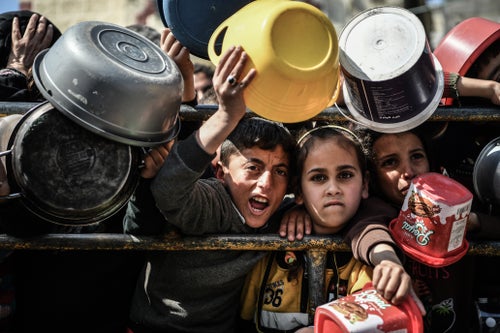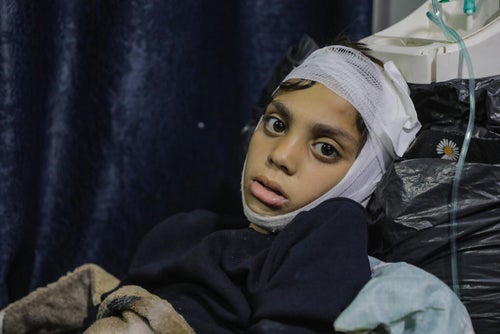For more than two years, children and their families have been living through a brutal conflict. Now, on top of mass displacement and ongoing violence, they are facing a devastating hunger crisis, cut off from the lifesaving nutrition and supplies they so urgently need.
The number of children suffering from severe malnutrition is rising at an alarming rate. Between January and May 2025, there was a 46 per cent increase in the number of children treated for severe acute malnutrition (the deadliest form of malnutrition) across Sudan’s five Darfur states, compared to the same period last year. In North Darfur alone, more than 40,000 children were admitted for treatment in the first five months of this year, doubling the number from the same period last year.
Famine has already been declared in parts of Sudan, including North Darfur. And with the lean season – the period from June to September, between harvests, when food stocks are at their lowest – now underway, without immediate action, the crisis could quickly spiral into widespread famine.
"Children in Darfur are being starved by conflict and cut off from the very aid that could save them. Even before the lean season fully takes hold, these numbers are dangerously high and will likely worsen without swift humanitarian action. This is a moment of truth; children’s lives depend on whether the world chooses to act or look away."
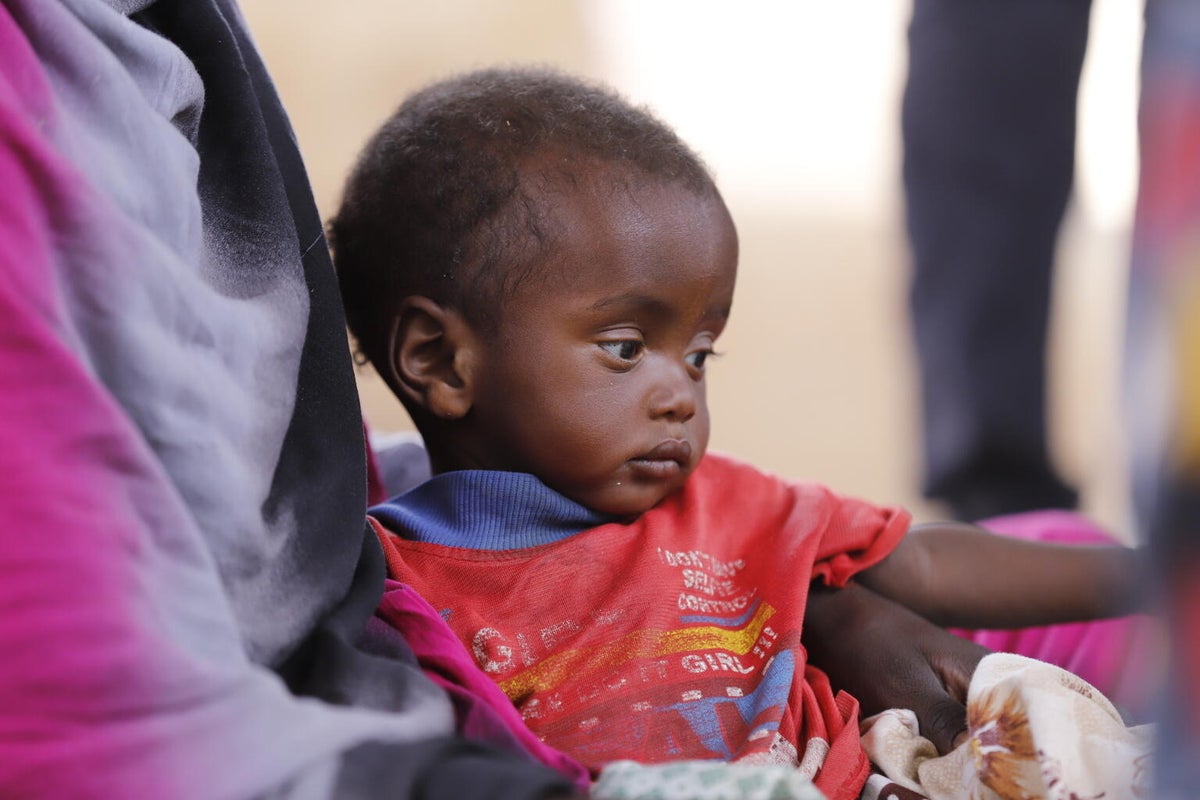
In North Darfur, violence has escalated sharply since April, particularly around the Al Fasher and Zamzam displacement camps. Entire neighbourhoods have been besieged, hospitals bombed, and roads blocked. On top of this, humanitarian access is severely restricted.
This crisis isn’t confined to North Darfur. Across Sudan, rates of child malnutrition are spiking, and now, in the peak of the lean season, even more children are now at risk of losing their lives in areas already on the brink of famine.
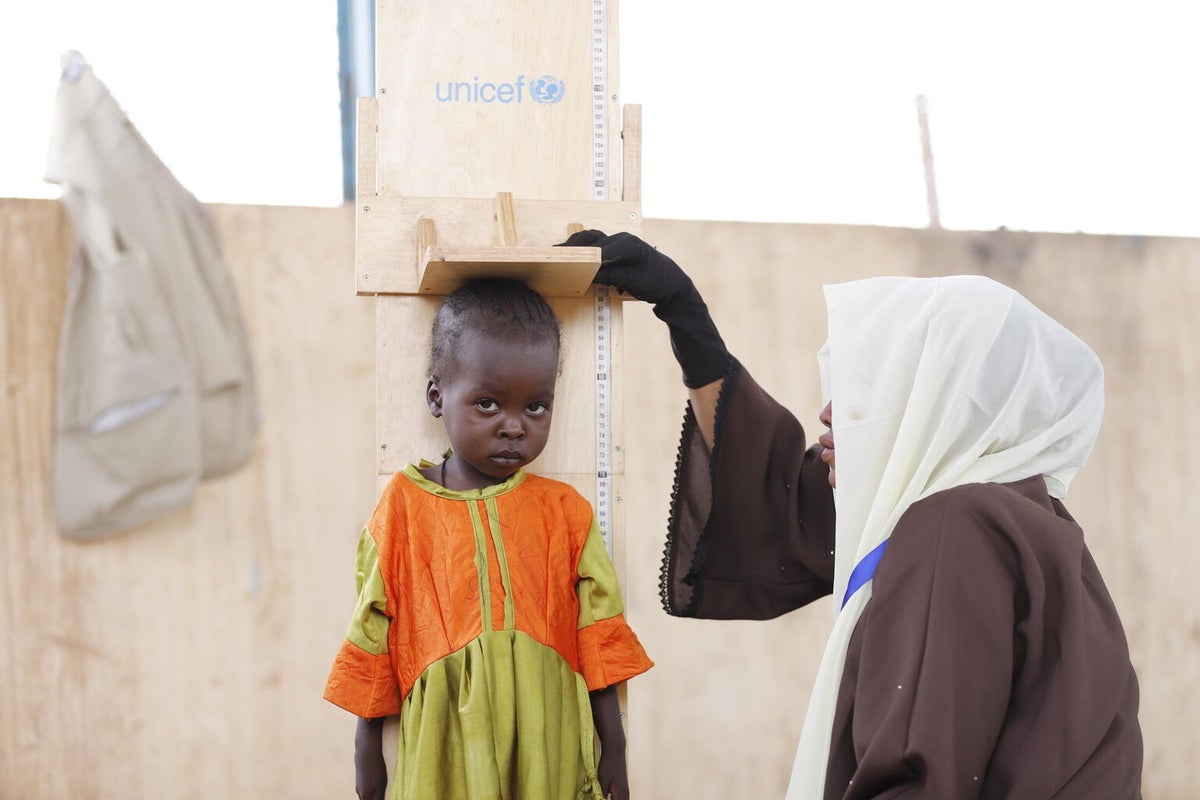
UNICEF managed to deliver supplies to Al Fasher earlier this year; however, the supplies of ready-to-use therapeutic food (RUTF) in Al Fasher are now exhausted. Health facilities in and around Zamzam camp have shut down, while water shortages and poor sanitation raise the threat of diseases spreading.
The crisis is displacing hundreds of thousands of people. In April alone, nearly 400,000 people fled Zamzam – one of the largest internally displaced persons camps in Sudan – with many walking up to 70 kilometres to reach Tawila. In Tawila, over 500,000 displaced people now crowd into public buildings or sleep in the open, with limited access to food, water, and shelter.
Waleed is fighting for survival as he battles malnutrition amid conflict
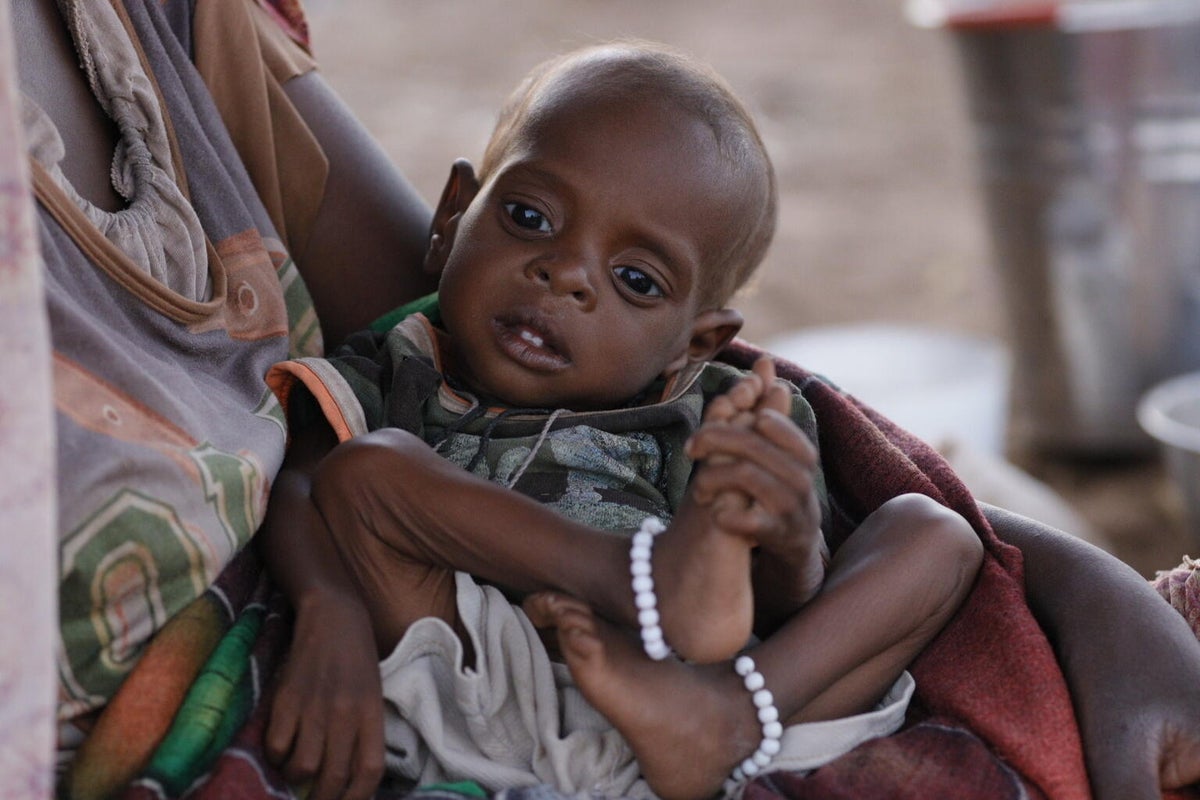
"The bombs were falling on the hospital. The sick children and their mothers were killed. Those of us who survived, left with only our children on our backs."
Hawa, a mother of three, fled with her children after shelling struck a hospital inside the Zamzam Camp, killing mothers, children and health workers. Hawa’s youngest, Waleed, had been receiving treatment at the hospital for severe acute malnutrition. Now, with his condition worsening, that care has been cut off.
“We have nothing. Nothing to eat or money to buy food for the children. I don’t have enough breastmilk to feed my baby, and he’s getting worse every day,” says Hawa.
With Waleed strapped to her back and her other two children in hand, Hawa walked three days to Tawila, joining thousands fleeing escalating violence. However, conditions there are dire, with shortages of food, water, shelter, and healthcare.
A farmer, before the conflict escalated, Hawa lost her crops and seeds when they escaped their home. For months, her family has survived on handouts from humanitarian organisations, but it is not enough, especially for Waleed.
“In the past, we had three to four meals per day. For the past two years, giving them one meal a day is a miracle,” Hawa says.
This is the harsh reality of life for millions of children after two years of relentless war. As families continue to arrive in Tawila, UNICEF and our partners are on the ground, assessing and addressing the urgent needs of displaced people, such as Hawa and her three children.
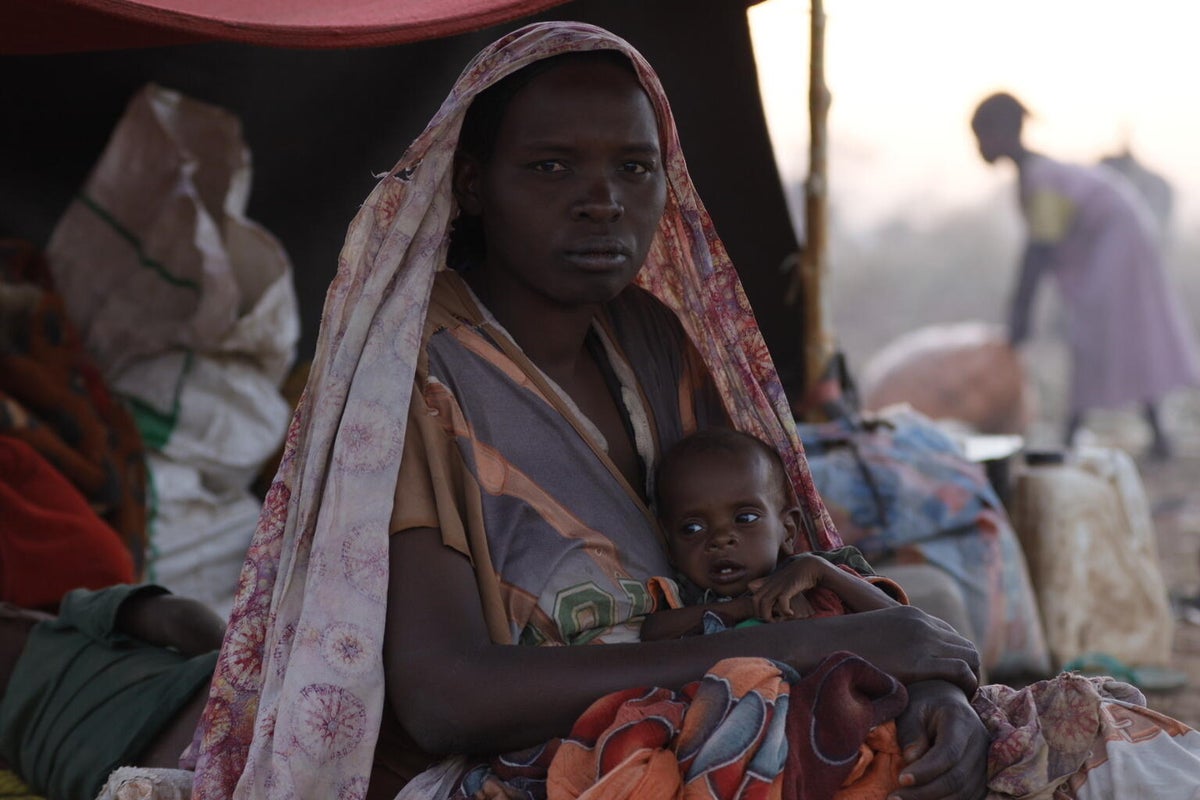
How is UNICEF helping children in Sudan
UNICEF is delivering lifesaving supplies and services to conflict-affected areas across Sudan, providing urgent support to both displaced families and host communities. At the same time, we’re supporting essential services, including equipping health facilities with nutrition supplies such as ready-to-use therapeutic food to support the treatment and recovery of malnourished children like Waleed.
But we can’t do this alone. We need your help to support UNICEF’s lifesaving work in Sudan and to ensure that every child not only survives but has the chance to grow up safe, healthy and full of hope.
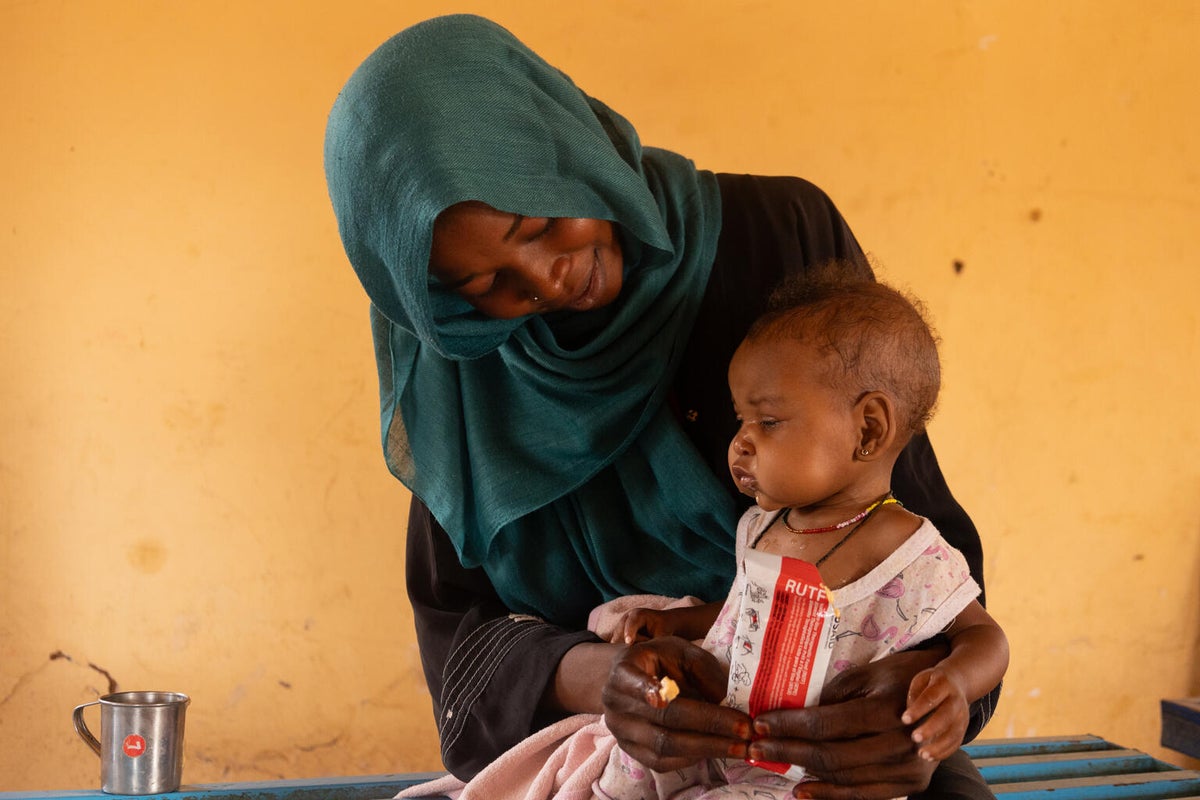
Basmat feeds her one-year-old daughter Amal with ready-to-use therapeutic food (RUTF) at a UNICEF-supported health facility, where children are screened for malnutrition and those affected are enrolled on the program and provided with lifesaving treatment.
“Amal developed malnutrition three months ago, and she stopped playing and cries a lot,” explains Basmat. “But since we received this RUTF food, she started eating a lot and is doing better than before. I hope my daughter heals and grows up happy.”
Children in Emergencies
UNICEF is providing urgent assistance to children. But we can’t do it alone. We need your help today.
Related articles
Stay up-to-date on UNICEF's work in Australia and around the world





